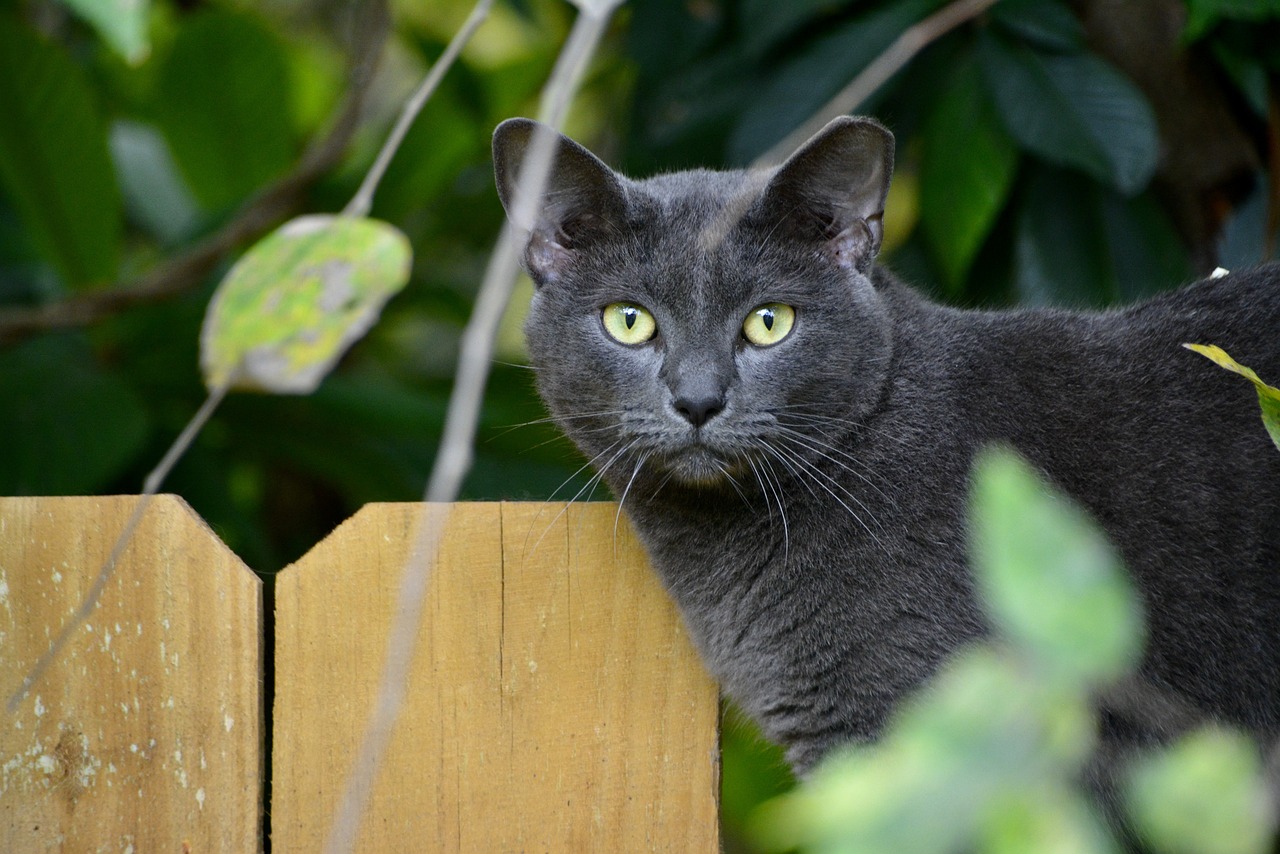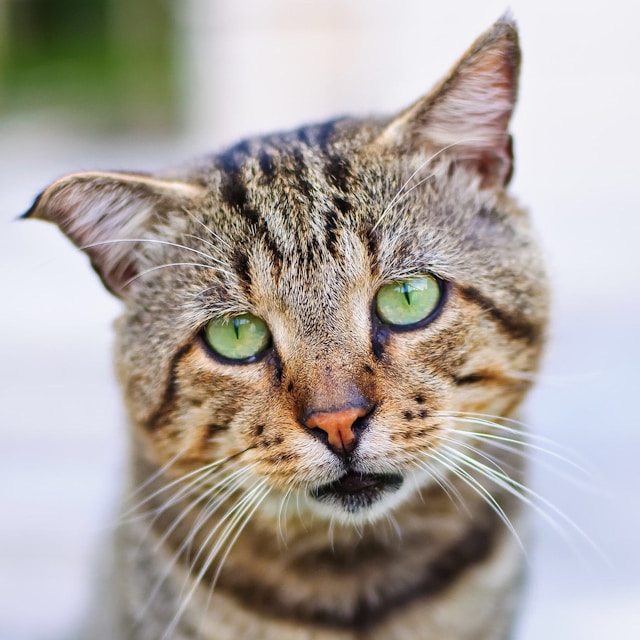Korat

| OFFICIAL NAME | Korat |
| COMMON NAME | Korat |
| PET HEIGHT | 9 to 13 inches |
| PET WEIGHT | 6 to 10 pounds |
| LIFESPAN | 10 to 15 years |
| GOOD WITH | cats, children, families, seniors |
| TEMPERAMENT | affectionate |
| INTELLIGENCE | high |
| SHEDDING AMOUNT | infrequent |
| PLAYFULNESS | medium |
| ENERGY LEVEL | calm |
| VOCAL LEVEL | when necessary |
| COAT LENGTH | short |
| COLORS | blue/gray |
| PATTERNS | solid |
| OTHER TRAITS | easy to groom, easy to train, friendly toward humans, good for first-time pet owners, good lap cat, hypoallergenic, strong loyalty tendencies tolerates being picked up |
As a "good luck cat" in their native Thailand, Korats are frequently presented to brides in pairs as unique wedding presents, per the Korat and Thai Cat Association (KTCA).
It is easy to comprehend why Korats have been treasured for centuries in Thailand. Their beautiful coats, wit, and affectionate disposition make them excellent lap cats who develop close relationships with their families.
Korat Appearance
The Cat Fanciers' Association (CFA) states that korats are distinguished by their unusual blue coat with silver-tipped fur, which gives them a shimmering, halo-like appearance. Their large, forward-facing ears, sleek build, and eye-catching green eyes that resemble peridot gems characterize this small-to-medium-sized breed.
Because of their unique features—their heads form a heart shape when viewed from both the front and the back, their noses are heart-shaped, and you can see a heart-shaped muscle in their chests, right between their front shoulders—the Korat is frequently referred to as "the cat with five hearts."
Korat Personality
Korats' temperament is surprisingly dog-like. They require a lot of active playtime because they are so energetic. They enjoy using their toys to discover new tricks and explore the house. Given their heightened energy levels, it's a good idea to allow them to spend some time outside under supervision.
Even though they are energetic animals, korats also like to unwind with their owners and other pets. They enjoy company and frequently try to "chit-chat" with you as they follow you around the house. Despite their tendency toward possessiveness, they can still love more than one person. Despite their preference for older children, their lively personality makes them excellent playmates for younger ones.
Korat Living Needs
Content to be a lap cat, Korat enjoys trailing her favorite family members about the house. It is crucial to provide her with toys to play with and scratching posts so she can keep her claws sharp. She will also enjoy lounging in hammocks by windows and scaling cat trees to observe birds.
Due to their adaptability, korats can live comfortably in both big and small homes. She'll be happy if she knows where her food and litter box are. Because of their gorgeous coats' low shedding, they are a better choice for those with hair allergies. Before bringing a Korat home, it's a good idea to spend some time with one to see if it will affect your allergies, as not all cats are hypoallergenic.
Korat Care
Korats require little grooming. All it takes to maintain its gorgeous, low-shedding coat is a once-weekly light brushing. Make sure they maintain their health by routinely checking their teeth and ears. Remember to keep their litter box tidy. Aside from that, you will only need to do more grooming with your Korat.
Korat Health
The KTCA reports that the naturally occurring Korat, which is close to 800 years old, is generally in good health. They can, however, be vulnerable to some health problems, just like any other cat. Everyday worries include obesity and dental disease, but you can help avoid them by providing your Korat with a healthy diet, regular exercise, and good dental hygiene.
Korats are susceptible to hyperthyroidism and kidney disease as they get older. Furthermore, some Korats have sensitive stomachs, so watch for frequent diarrhea or vomiting. If the stomach of your Korat is sensitive, you should feed them cat food specifically designed for sensitive stomachs; do not give them human food or make abrupt dietary changes.
Korat Exercise Requirements
A Korat needs to be convinced to play. This breed can switch from relaxed to active play mode very fast. Traditional toys, such as laser pointers and mice, are always popular. Another inventive thing you can do is hang shelves for them to jump on from your walls. Possessing a cat tree is imperative; having two is even better if you need more than shelves.
The secret to creating a solid bond with your Korat is to play with it. So prepare for some fun by grabbing a string or a bird toy.
Korat Training
It must be easy to teach your Korat new commands or tricks. House training a Korat cat breed is simple because most cats, including this breed, learn to use the litter box without problems.
In addition, Korats are simpler to leash train than other breeds. Begin by acclimating your Korat to wearing a harness inside. Like dogs, they'll associate going outside with the leash and harness once they get used to it.
Korat History
The Korat cat was first recorded in a manuscript titled "Treatise on Cats," which dates from approximately 1350. This book describes 17 "good luck cats," such as the Korat. The book's illustration, which demonstrates how little the breed has changed over the ages, is strikingly similar to the modern-day Korat cats.
These cats, named after the Thai province of Korat, are given as gifts frequently, especially to newlyweds, and are regarded as symbols of prosperity. Korats were only given as gifts and were sold in the middle of the 20th century.
In 1959, the proprietors of the Oregon-based Cedar Glen Cattery received a pair of cats as gifts. They were the first Korats imported into the United States. The Cat Fanciers' Association (CFA) states that nearly all modern American Korats can be descended from these original two. In 1966, the CFA formally recognized the breed.
Korat Fun Facts
Until the middle of the 20th century, Korat cats were only ever given as gifts in Thai society due to their tremendous value.
Cat Fanciers' Association (CFA) says korats with striped or crimped tails were considered especially lucky.
Their significance and appearance are reflected in their Thai name, Si-Sawat. "Sawat" means "prosperity," emphasizing their importance as lucky charms, while "Si" means "grayish-blue," characterizing the color of their coat.
Get insurance plans with wide-ranging coverage options













